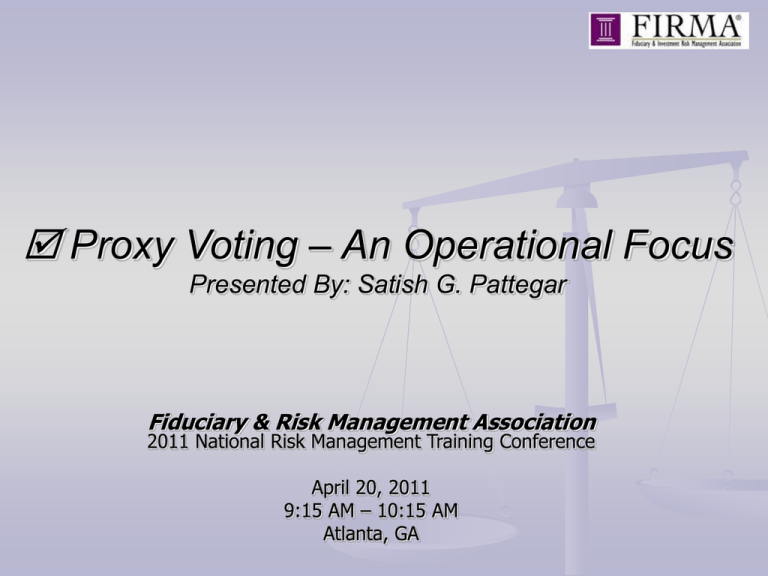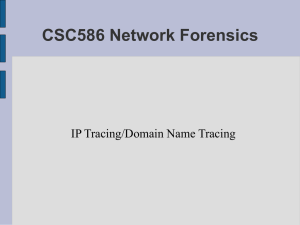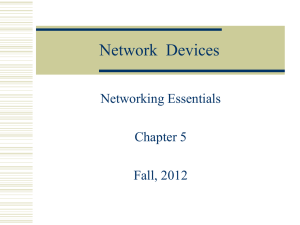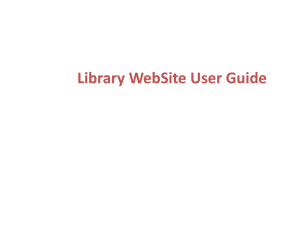Proxy Voting – An Operational Focus Presented By: Satish
advertisement

Proxy Voting – An Operational Focus Presented By: Satish G. Pattegar Fiduciary & Risk Management Association 2011 National Risk Management Training Conference April 20, 2011 9:15 AM – 10:15 AM Atlanta, GA “Proxy voting is a cumbersome process that has traditionally frustrated the voter and confused the issuer. On one hand there is growing recognition that proxy voting is increasingly important in fulfilling fiduciary responsibility and influencing financial strategy. On the other hand, with globalisation and the expansion of the shareholder culture, the technical considerations of ensuring a smooth proxy voting process across multiple stakeholders, time zones and issues are getting more challenging.” Neil Daswani Global Head, Securities Services Standard Chartered Bank Importance of Proxy Voting Most shareholders are not able to attend shareholder meetings Majority of investor shares are held by Intermediaries for the benefit of their client The financial crisis and revived shareholder activism have brought greater attention to the proxy voting process The SEC enforced its first action on an RIA in 2009 for a proxy voting record violation Regulations, Rules & Standards Regulation of the proxy solicitation process was assigned to the SEC in 1934 The SEC, OCC, FDIC, FRB, DOL, FINRA, and OTS have implemented proxy related rules Fiduciary standards require accurate implementation and records of the proxy voting process The Process Majority of securities are held in street name (i.e. DTC) DTC receives the issuer proxy notification based on record date ownership DTC is required to pass proxy notification to its participants based on DTC participant ownership records The Process - Continued Institutional custodians (DTC participants) identify discretionary vs. pass-through votes and provide processing information to proxy processing service providers The service provider typically forwards proxy materials to beneficial owners, collects voting information from those beneficial owners, and forwards tabulated votes to the issuer The Process - Continued Fiduciary duties drive the need to ensure internal processes are adequately structured to ensure proper compliance Adjustments to the final tabulation may be needed due to various factors (loaned securities, fails, trade errors, etc.) Trade vs. Settlement Factors to Consider 1. 2. 3. 4. 5. 6. Identification of Roles and Responsibilities Review of Service Provider Contracts Understanding the Operating Systems Ensuring proper segregation of duties Shareholder Communication Act coding compliance Adjustments & Reconciliation processes Roles Internal Business Lines Operations SEC rules require banks to respond in one business day with the names and addresses of all respondent banks; and within seven days with the number of customers who are beneficial owners of shares External DTC Broker Dealers Service Providers Ownership Registered Beneficial Ownership The Flow ISSUER Delivery of Materials & Cards Delivery of Materials Notification DTC Omnibus Proxy T/A OR OTHER SERVICE PROVIDER SECURITIES INTERMEDIARIES POA & Data Feed of Bene Owners SERVICE PROVIDER REGISTERED OWNER Forward Proxy Mats. and VIFs INDIVIDUAL BENEFICIAL OWNERS Executed Proxies Source: SEC VOTE TABULATOR Forward Proxy Mats. and VIFs INSTITUTIONAL BENEFICIAL OWNERS PROXY ADVISORY AGENT Executed Proxies on Behalf of Service Intermediary Executed Proxies Third Parties in a Proxy Voting Process Transfer Agent Proxy Service Providers Proxy Solicitors Vote Tabulators Proxy Advisors In Summary The accountability assigned to custodian is significant since the process is fueled by system coding to drive efficiencies System level codes entail: Proxy voting authority Proxy handling Proxy mailing address Codes are at: Account level Asset and tax lot level In Summary - Continued Service providers may vary for: Domestic proxy Global proxy Discretionary vs. directed Areas of regulatory compliance focus include: Accuracy of coding (account level and tax lot level) SCA compliance (OBO vs. Non-OBO) Proxy solicitors compliance In Summary - Continued Areas of regulatory compliance focus include: Segregation of duties Conflict of interest Securities lending impact Fails & trade errors Reconciliations Exception reports & escalation Documentation & retention Conclusion Many in the industry believe the existing process is too cumbersome and expansive because issuers must communicate with their beneficial owners through the intermediaries holding the shares in street name, rather than directly with the beneficial owners. Several studies are under way and results may change the process further. QA








